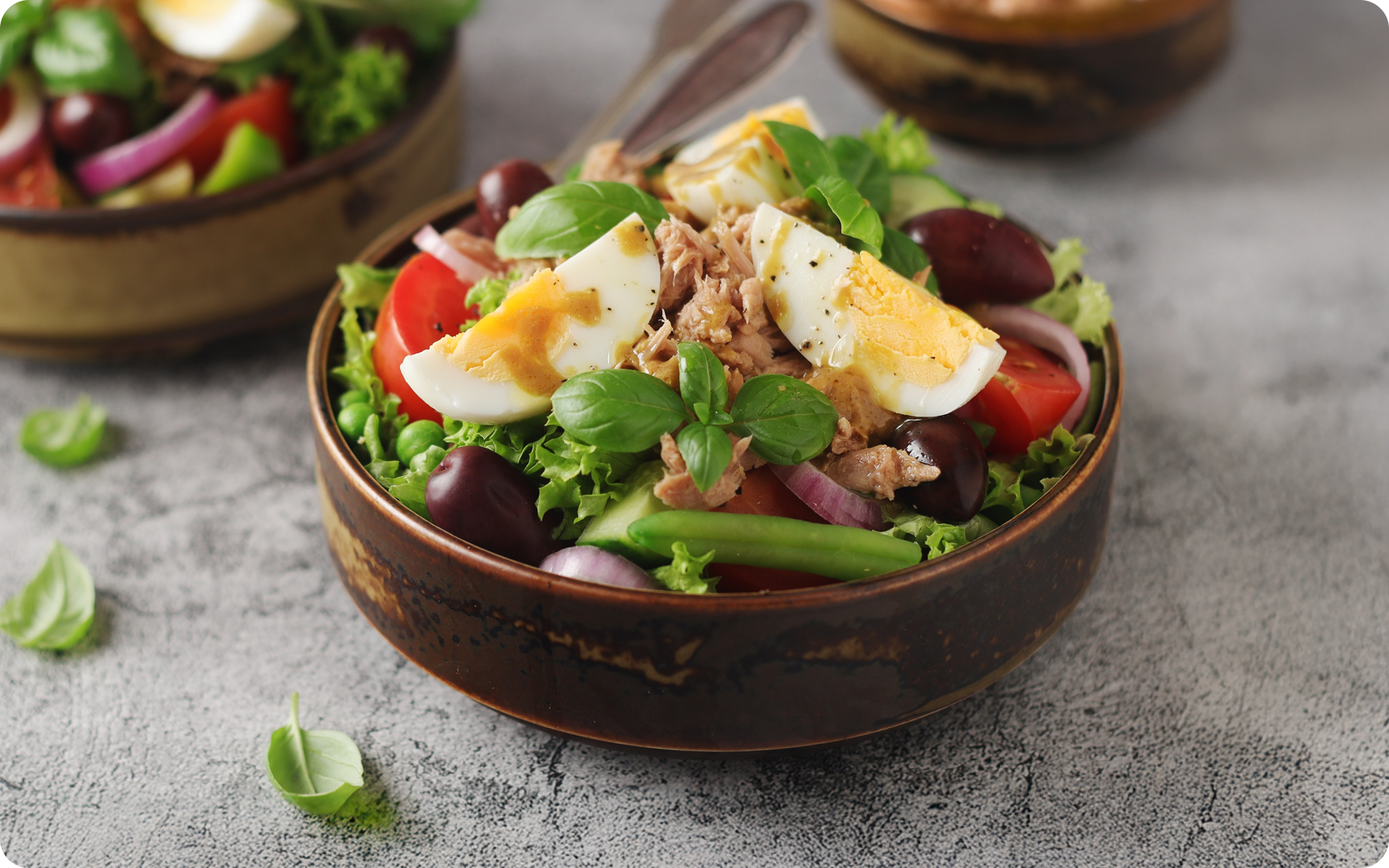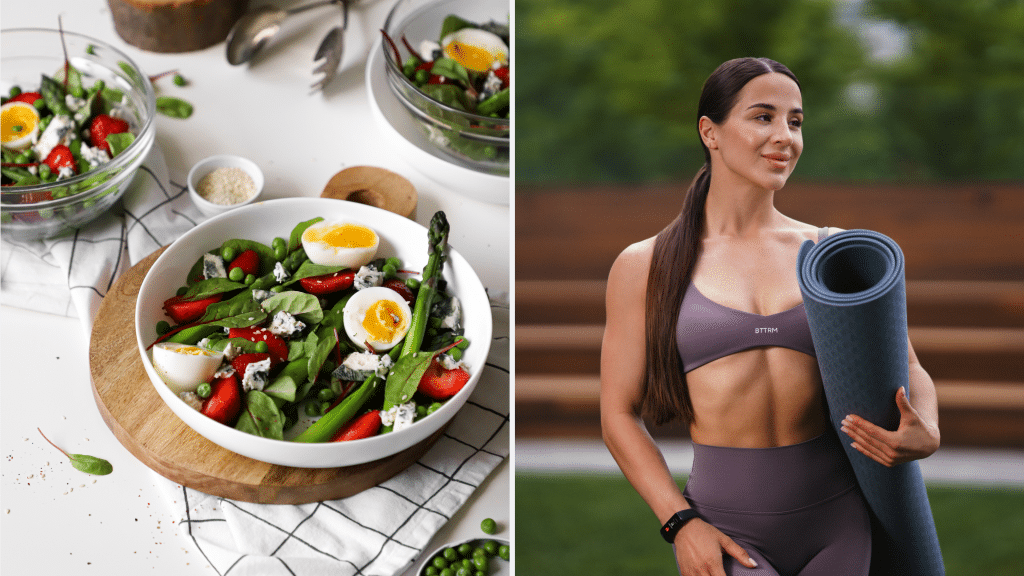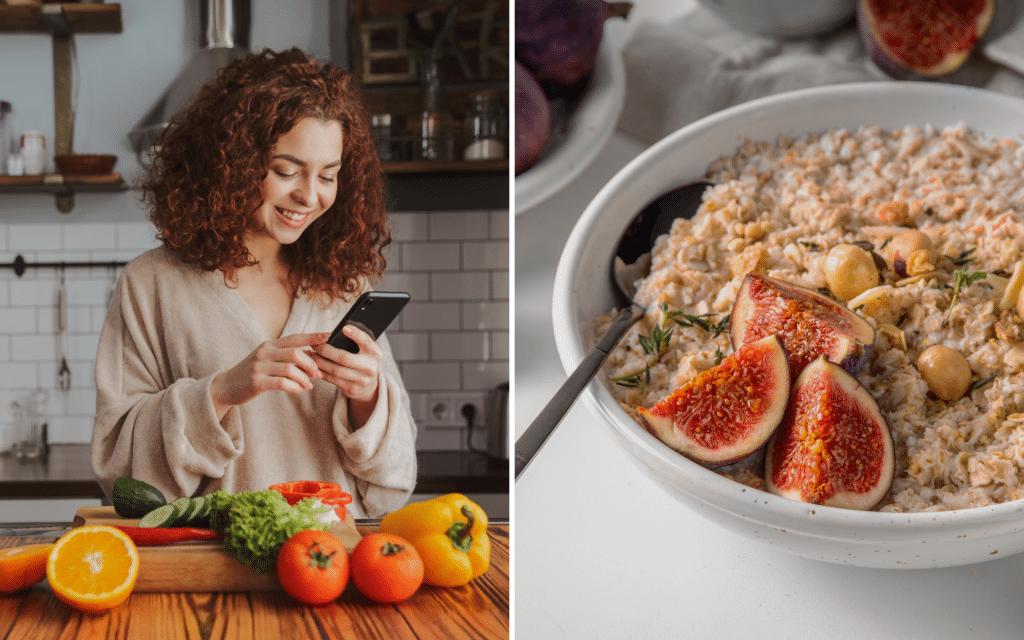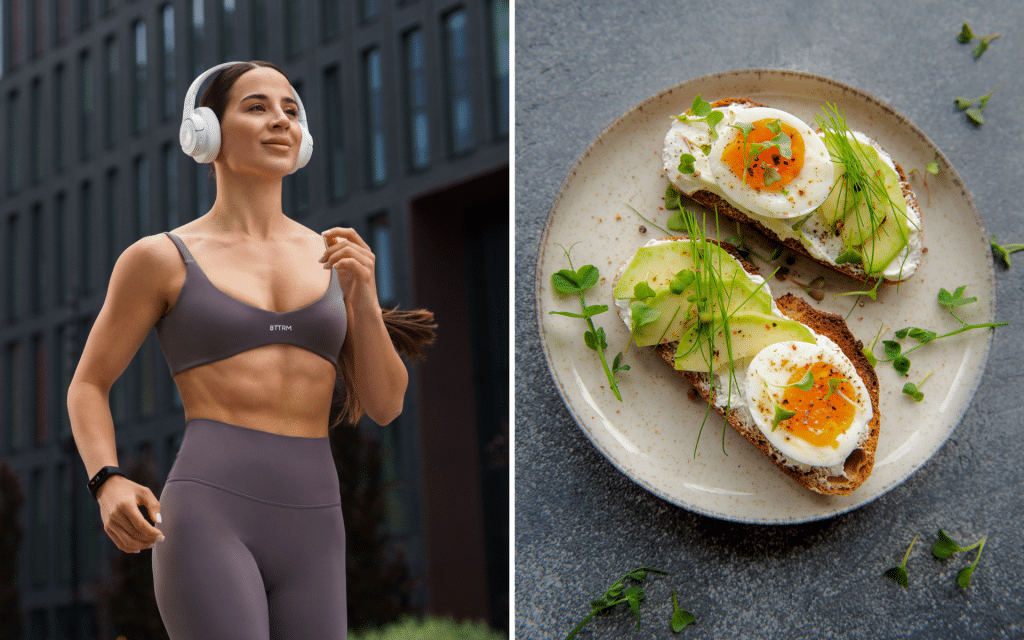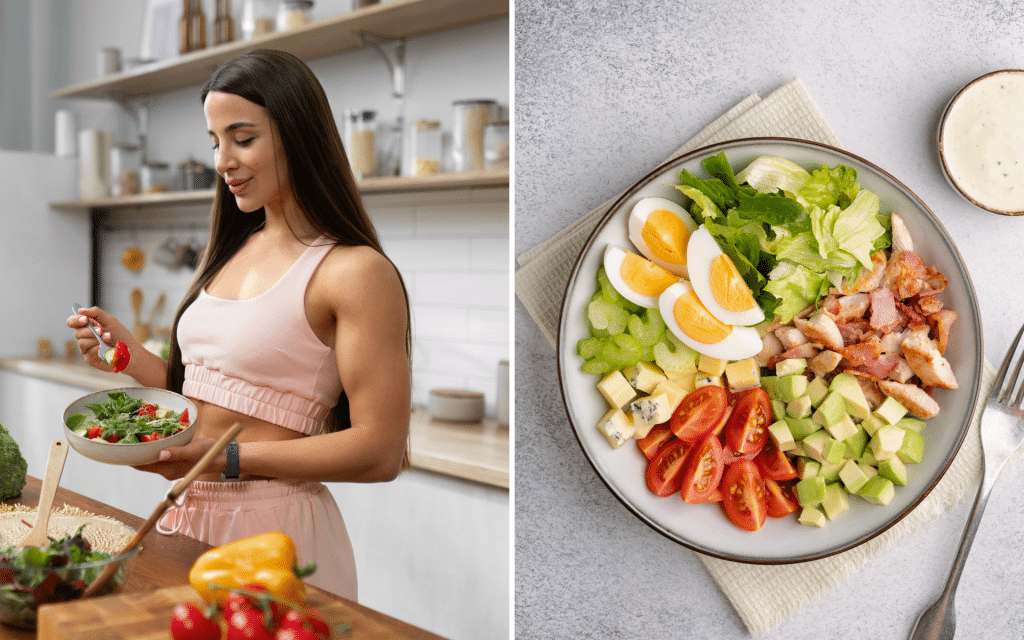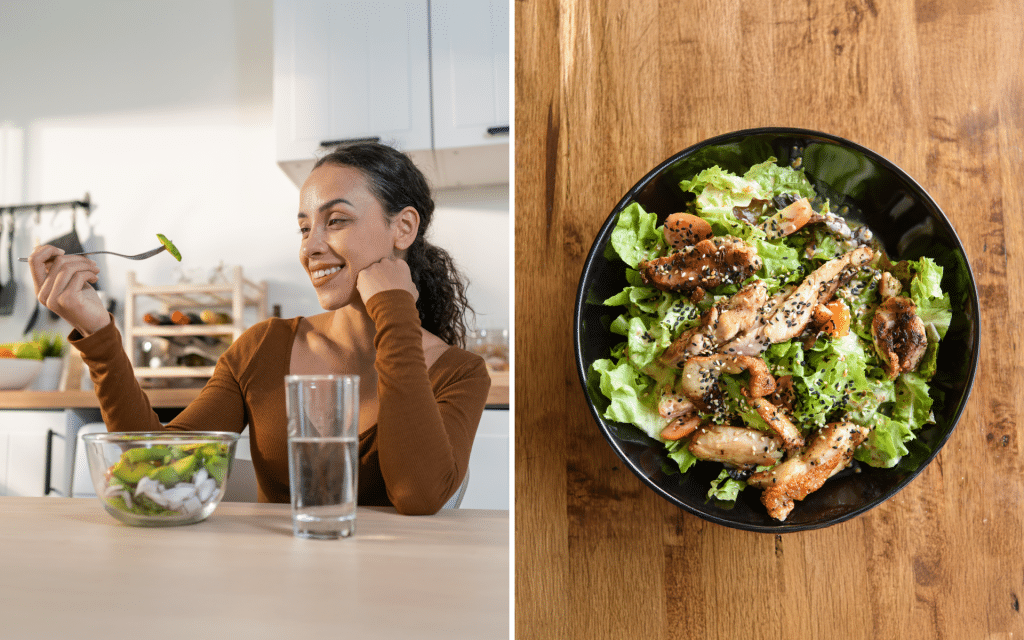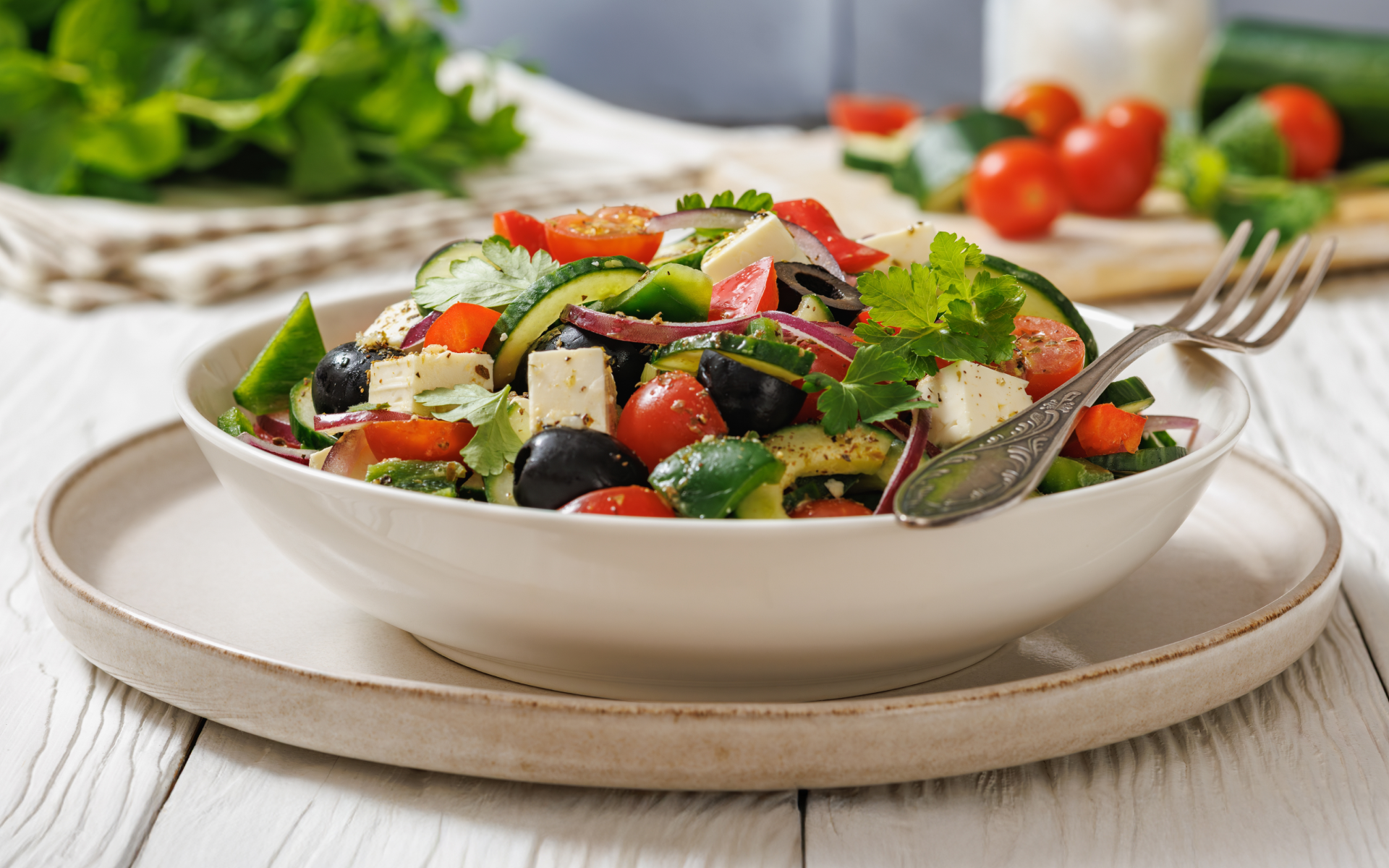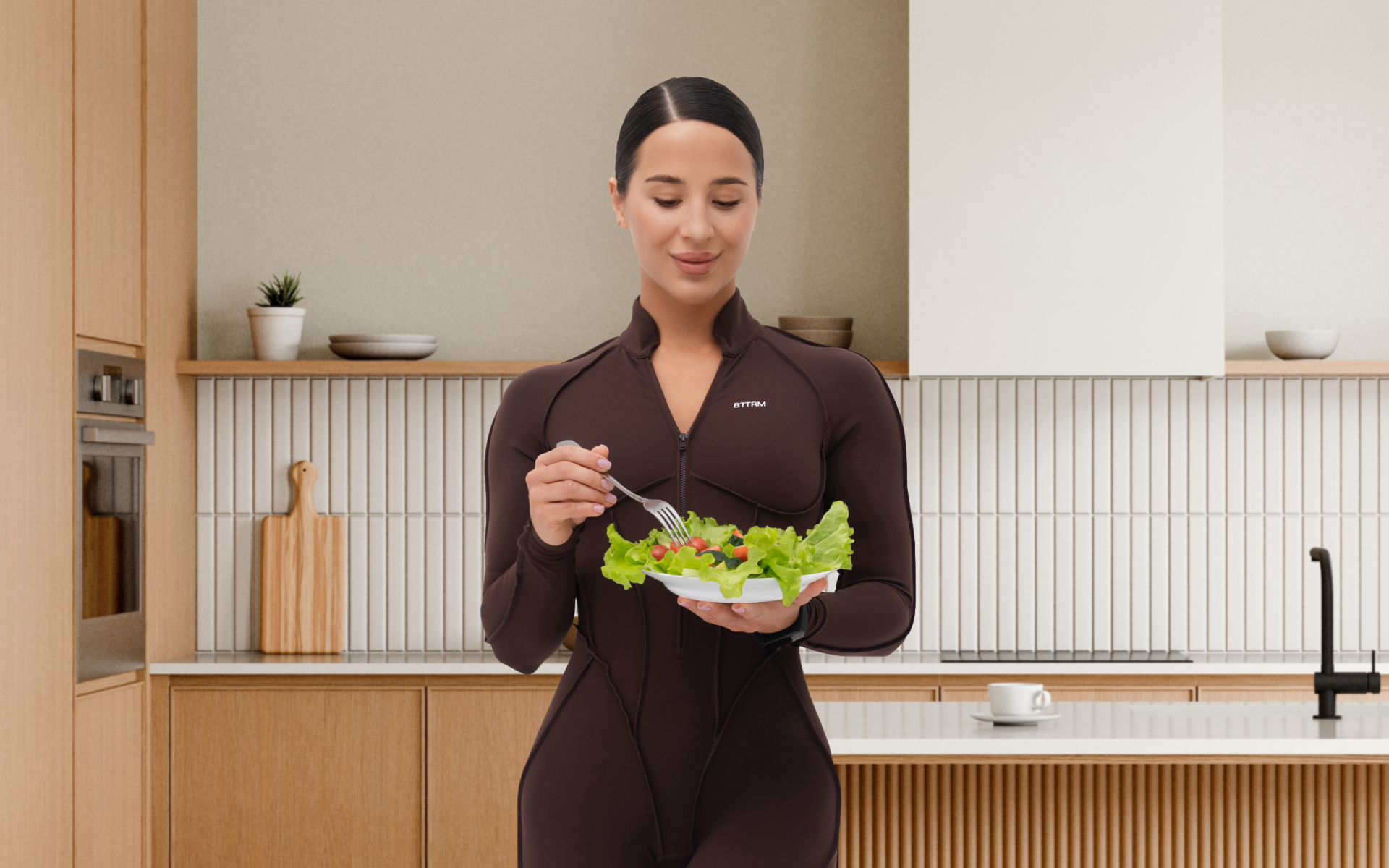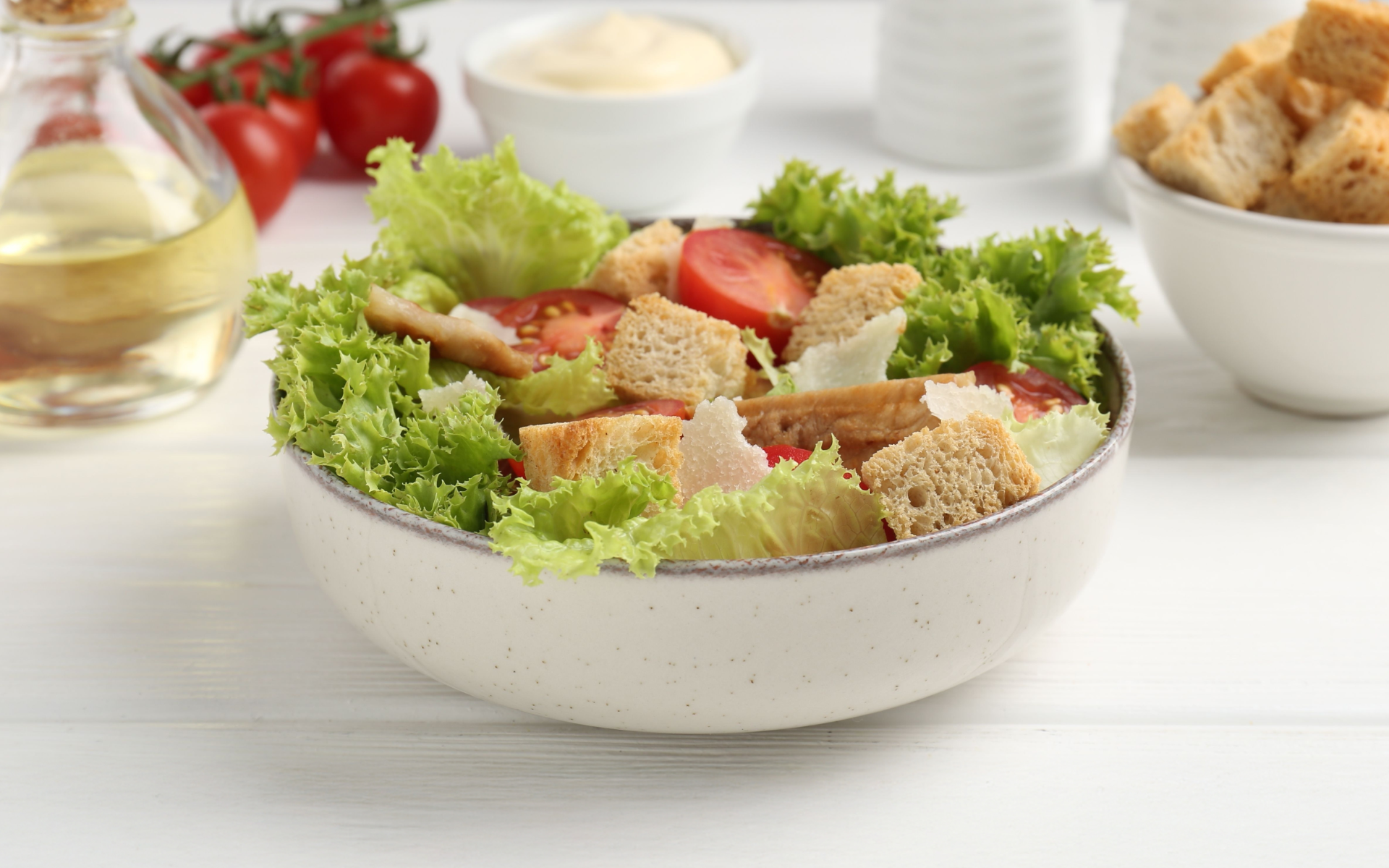If you are looking for a meal plan to help you manage your weight, build a stronger and leaner body, build and repair tissues and muscles, and improve your overall health, then a healthy high-protein meal plan is a great option.
Indulging in a high-protein meal plan doesn’t mean only eating protein foods.
Although you would primarily eat just protein in a “healthy high-protein meal plan low carb.”
The well-rounded, high-protein meal plan incorporates a balance of:
- Fiber
- Healthy fats
- Complex carbohydrates
- Essential nutrients that your body needs.
Of course, there are several benefits that you get with a healthy high-protein meal plan, such as the following:
Muscle Growth And Maintenance
Eating high-protein foods for muscle building provides the essential building blocks, or amino acids, needed to rebuild and repair muscle tissues.
Remember, exercises may damage muscle tissues; therefore, there is a need for repair done by the essential amino acids derived from protein.
In addition, it helps prevent muscle loss when you are losing weight or have a calorie deficit. Sometimes, the body may break down muscle for energy, but your body preserves the lean muscle mass with adequate protein.
Weight Management
The first thing you must note about protein is that it promotes satiety.
This fuller feeling can help reduce food cravings and prevent overeating.
Additionally, protein slightly boosts metabolism, making the body burn a few more calories processing protein than it would with carbs or fats.
Healing And Recovery
As mentioned, protein promotes the repair of body tissues, aiding in healing and recovery. Your body needs a lot of protein to speed up healing after an injury due to high-intensity exercises or surgery.
Of course, those are just the few benefits of a high-protein diet plan.
Now, let’s go deeper into other details that you should know about this diet plan.
Boosts Metabolism
Protein has a higher thermic effect, which translates to slightly more energy expenditure to metabolize than carbs and fats. Metabolism is, therefore, enhanced since the body needs more energy to digest and process them (2).
BetterMe: Health Coaching app helps you achieve your body goals with ease and efficiency by helping to choose proper meal plans and effective workouts. Start using our app and you will see good results in a short time.
May Improve Bone Health
Several studies suggest that a high-protein diet combined with calcium may help strengthen the bones and reduce fracture risk (3). Therefore, if you want to improve bone health, eating more protein and adequate calcium is essential.
Exercise is also a key component in strengthening bones and muscles.
Improved Sleep Quality
Some people get awakened by hunger pangs. You should feel more full throughout the night with a high-protein diet in your dinner. Therefore, eating more protein for dinner will be a good way to avoid midnight disruptions caused by hunger.
What Is A Healthy High-Protein Meal Plan?
A healthy high-protein meal plan prioritizes high-quality protein sources with balanced complex carbohydrates, healthy fats, and other essential nutrients.
Protein develops and maintains muscle and weight management, among other benefits.
Therefore, a higher protein meal plan is eating more protein than the recommended dietary allowance (RDA). The RDA is 0.8g of protein per kilogram of body weight (4).
If you want to gain muscle, lose weight, or engage in high-intensity exercises, you must eat more protein than the RDA.
Standard recommendations range from about 1.2 – 2.2g per kilogram of body weight (7). You may need to experiment to pinpoint the specific amount that works best for you.
A well-balanced high-protein meal plan should incorporate a diverse nutrient profile from a variety of healthy protein sources such as:
- Seafood and fish
- Poultry and lean meats
- Legumes and pulses
- Soy products like tofu and tempeh
- Whole grains
- Nuts and seeds
- Dairy products
- Protein-rich vegetables and fruits
Read more: Healthy Fitness Meals to Fuel Your Workout Every Day
What Protein Should I Eat Everyday?
According to the American Heart Association, you should choose high-quality, healthy protein sources rich in essential amino acids, among other nutrients (6).
Healthy protein sources include the following:
Plant-Based Protein Sources
- Legumes: Black beans, chickpeas, lentils, pinto beans, etc.
- Nuts and Seeds: Walnuts, cashews, chia seeds, almonds, flaxseeds, pumpkin seeds, and hemp seeds.
- Whole Grains: Brown rice, quinoa, oats, whole wheat, and more.
- Soy Products: Soy milk, tofu, tempeh, and edamame.
- Vegetables: Spinach, kale, and broccoli.
- Fruits: Avocados, guavas, blackberries, and jackfruit.
Note: Some plant-based sources are lower in protein content, but also contribute. You can pair these with others that are higher in protein.
Animal-Based Protein Sources
- Fish and Seafood: Shrimp, salmon, sardines, tuna, and trout.
- Poultry: Skinless chicken breast, duck, turkey breast.
- Eggs and Dairy: Greek yogurt, cottage cheese, eggs, and milk.
- Red Meat: Lamb, lean beef, pork, and game meat.
You must pair the high-protein sources with your meals if you want a high-protein diet. Of course, we didn’t mention all animal and plant protein sources, as the few highlighted are just a few common examples.
What Is The Healthiest Thing To Eat For Protein?
There are several healthiest protein sources, including both plant and animal sources, that you can tap into. It is impossible to isolate a single food as being more nutritious than others, since different protein sources also contain other nutrients essential for the body.
Ideally, you want to include various plant- and animal-based protein sources in your diet. Therefore, for healthy protein, you should consider the following foods:
Animal Sources
- Lean meats: Lean beef cuts, chicken breasts, and turkey breasts are lean meats that make up healthier protein sources.
- Fish: Cod, tuna, and salmon are some of the best protein sources.
They are also rich in omega-3 fatty acids.
- Eggs: Apart from being an excellent, rich source of protein, egg protein is highly bioavailable, while being affordable and healthy.
- Dairy: Low-fat milk, cheese, and yogurt are excellent protein sources.
Dairy products are also rich in calcium, which strengthens the bones.
Plant-Based Sources
- Legumes: Lentils, black beans, chickpeas, and kidney beans are protein-rich legumes.
- Nuts and seeds: Almonds, chia seeds, and other nuts and seeds are rich in protein and fats.
- Whole grains: Though not primarily protein sources, whole grains like quinoa and amaranth contain a good amount of protein and can complement other protein sources.
- Soy products: Soy milk, tempeh, edamame, and tofu are examples of soy products rich in protein.
What Is A Healthy High-Protein Meal Plan For A Beginner?
If you are a beginner, designing a meal plan high in protein can be a challenge since you will need to identify foods to include in your diet plan, and ensure you are doing it healthily.
Here is a good example of a high-protein meal plan that you may find simple and effective:
High-Protein Meal Plan for A Beginner: Example 1
Here is an example of a high-protein meal plan for beginners.
Adapt the meal plan to your needs by adjusting portion sizes or substituting.
This customization can help anyone looking for a specific healthy high-protein meal plan female-specialized or customized for a male (Note: Both genders will benefit from similar protein amounts).
Daily Target/Goal
- Calories: 1800 – 2000
- Meal Frequency: 3 meals with 1 or 2 snacks
- Protein: 100 – 130g
Breakfast (about 30g of protein)
- 1 scoop of protein powder
- ½ cups of oats
- Peanut butter
- Berries
- Black tea
Morning Snack (about 20g of protein)
- 2 hard-boiled eggs
- Unsweetened Greek yogurt
Lunch (about 35g of protein)
- 150g of grilled chicken breast
- Steamed vegetables (spinach or broccoli)
- 1 cup of quinoa or brown rice
- 1 tsp of olive oil dressing
Afternoon Snack (about 20g of protein)
- 1 can of drained tuna
- 1 medium apple
Dinner (about 25g of protein)
- 150g of grilled fish or firm tofu
- Mixed vegetables and bell peppers
- 1 cup of cooked brown rice
High-Protein Meal Plan For A Beginner: Example 2
Another example of a high-protein meal you can try or adapt is here.
It is also a simple one with common and affordable ingredients:
Breakfast (about 28g of protein)
- 2 boiled eggs
- Steamed vegetables
- A slice of whole-grain toast
- ½ cups of cooked beans (kidney beans or black beans)
Morning Snack (about 25g of protein)
- 1 banana
- A scoop of protein powder
- Unsweetened almond milk
- 1 tbsp of chia seeds
Lunch (about 35g of protein)
- 150g of minced chicken
- Mixed vegetables
- 1 cup of brown rice
- Little olive oil dressing
Afternoon Snack (about 15g of protein)
- ½ cups of roasted chickpeas
- A handful of nuts
Dinner (about 25g of protein)
- A small portion of cooked quinoa
- 1 cup of cooked lentils
- Steamed vegetables
- ½ of an avocado
Note: The two examples are balanced high-protein sources with a mix of animal and plant protein, among other nutrients. You can keep it simple with readily available ingredients and by repeating your favorites. In addition to that, you can constantly adjust the proportions to suit your needs.
Which Meal Should Be High-Protein?
Is it breakfast, lunch, or dinner?
Regarding protein intake, the amount of protein to eat for breakfast, lunch, and dinner has been a matter of concern. Many people question which meal should have higher protein than the other.
Most experts would recommend trying to include a good amount of protein at all meals to spread it throughout the day, but some considerations may be dependent on your personal goals, for instance:
- Building Muscles Or Working Out
If you are building muscles or engaged in workouts, consider a post-workout meal with high protein, which could be breakfast, lunch, or dinner.
It could also be a snack. Protein supports muscle growth and repair, but you must also incorporate carbs to help recover post-workout.
- For Energy And Focus During The Day
You may need to incorporate more protein in your breakfast to keep you full for longer and avoid having energy crashes, especially during work. This extra protein can also help promote mental focus and stabilize blood sugar levels.
- To Lose Or Manage Weight
A healthy high-protein meal plan for weight loss uses protein to keep you full.
You may need to incorporate more protein for breakfast to prevent snacking or overeating later. Eating enough protein to keep you full until lunch makes you less likely to indulge in high-calorie foods due to cravings or hunger.
- Trouble Sleeping Or Midnight Hunger
If you have insomnia or other challenges when trying to sleep or constantly get disrupted by hunger, eating more protein for dinner would be best.
This fullness should help you sleep better so you won’t wake up to pangs of hunger during the night. You also need to balance vegetables and complex carbs among other nutrients.
All your meals should have some protein, but based on what we just discussed, you may need to focus more on increasing protein at certain meals than others based on individual needs, goals, or the above factors.
Read more: Clean Eating Challenge: A Simple Guide To Kickstart Your Journey
How To Eat 30g Protein At Every Meal?
Aiming for 30g of protein at every meal is an excellent goal for promoting satiety and muscle maintenance. It is a good practice, especially if you are engaged in different workouts.
Protein can help in preventing muscle breakdown. Eating 30g of protein at every meal means you will get 90g daily protein.
To achieve 90g of protein a day, you need to do the following:
- Include high-protein foods in every meal: Try chicken breast, salmon, cottage cheese, turkey, and lentils to achieve your protein targets in every meal with ease.
- Use protein shakes and powders: Protein shakes and powders will help supplement your protein whenever you are short of your targets. Mix them with milk, water, or incorporate them in your smoothies.
Here are the examples of what 30g of protein in every meal would look like:
30g Protein Every Meal: Example 1
Breakfast (30g of protein)
- 3 egg whites and 3 whole eggs (21g)
- 2 tbsp on a slice of whole grain toast (about 9g)
- Black tea or coffee
Lunch (30g of protein)
- 4 ounces of grilled chicken breast with veggies (about 30g).
Dinner (30g of protein)
- 120g of grilled salmon (about 28g)
- Steamed vegetables (about 2g).
Reasons why BetterMe is a safe bet: a wide range of calorie-blasting workouts, finger-licking recipes, 24/7 support, challenges that’ll keep you on your best game, and that just scratches the surface! Start using our app and watch the magic happen.
30g Protein Every Meal: Example 2
Breakfast (about 30g of protein)
- A cup of non-fat Greek yogurt
- 1 tsp of chia seeds
- ¼ cups of mixed nuts (walnuts and almonds)
- ½ cups of berries (raspberries, blueberries, and strawberries)
Lunch (about 30g of protein)
- 4 ounces of grilled chicken breast
- ½ cups of steamed vegetables
- ¼ of sliced avocado
- 2 cups of green salads
Dinner (about 30g of protein)
- 4 ounces of baked salmon
- A cup of steamed broccoli
- A cup of cooked quinoa
Frequently Asked Questions
Is rice high in protein?
No, rice is not high in protein, but it contains some. It is primarily a carbohydrate food and, therefore, can complement other foods that are higher in protein.
That means it contains a little protein and can contribute to the protein in your meal, but it is not enough on its own.
Is pasta high in protein?
Pasta is also primarily rich in carbohydrates and not high in protein.
It does, however, contain a little amount of protein, still usually not enough to be a protein source on its own. Some legume-based pastas are much higher in protein than your standard wheat-based pastas.
Does avocado have protein?
Yes, avocados have protein in small amounts. A whole medium avocado contains about 3g of protein (1). Therefore, incorporating avocados can add to your protein goal. This amount of protein is not enough to call it a day. It is important to note that avocado is a source of healthy fats as it contains monounsaturated fats and is also a good source of fiber.
How much protein is in oats?
Oats are moderately rich in protein, though it is primarily a carbohydrate food.
1 cup (82g) of oats contains about 10.6g of protein (5). Therefore, adding oats to your diet will not only contribute to carbs but also to your protein.
The Bottom Line
With a healthy high-protein meal plan, you are on the right track towards managing your weight, building muscles, repairing damaged or injured tissues, supporting your immune system, and stabilizing blood sugar levels.
Protein has several other benefits, and these promote overall good health.
Therefore, if you want to live a healthy lifestyle and get all the benefits of this diet, you need to plan with the list of food choices that we have mentioned.
Consider healthy lean protein sources like fish, seafood, poultry, and legumes.
Balance your meals with other essential nutrients such as healthy fats and complex carbohydrates.
DISCLAIMER:
This article is intended for general informational purposes only and does not serve to address individual circumstances. It is not a substitute for professional advice or help and should not be relied on for making any kind of decision-making. Any action taken as a direct or indirect result of the information in this article is entirely at your own risk and is your sole responsibility.
BetterMe, its content staff, and its medical advisors accept no responsibility for inaccuracies, errors, misstatements, inconsistencies, or omissions and specifically disclaim any liability, loss or risk, personal, professional or otherwise, which may be incurred as a consequence, directly or indirectly, of the use and/or application of any content.
You should always seek the advice of your physician or other qualified health provider with any questions you may have regarding a medical condition or your specific situation. Never disregard professional medical advice or delay seeking it because of BetterMe content. If you suspect or think you may have a medical emergency, call your doctor.
SOURCES:
- Avocados (2022, nutritionsource.hsph.harvard.edu).
- Clinical Evidence and Mechanisms of High-Protein Diet-Induced Weight Loss (2020, pmc.ncbi.nlm.nih.gov).
- High Versus low Dietary Protein Intake and Bone Health in Older Adults: a Systematic Review and Meta-Analysis (2019, sciencedirect.com).
- How much protein do you need every day? (2023, health.harvard.edu).
- Oats (n.d., nutritionix.com).
- Picking Healthy Proteins (2023, heart.org).
- Systematic review and meta-analysis of protein intake to support muscle mass and function in healthy adults (2022, pubmed.ncbi.nlm.nih.gov).
